#Celtic archaeology
Text
Tablet weaving

Tablet weaving or Card weaving is a weaving technique used for belts or trims. Instead of weaving on a loom, a certain amount of yarn lengths are placed through cards, with the yarn being tightened between a post and the weaver's own body. The pattern being created by turning the cards in a certain direction.
Tablet weaving has been around since the Iron Age, with the oldest examples being found in Hallstatt, Austria dated around 1200 B.C. (3200 years old), and was commonly used in European dress until the Viking age (1000 A.D.). The use later declined with mass produced textiles on big looms being more and more common. Scientists have no idea how patterns were invented or taught to new weavers. No examples of written patterns exist from this 3500 year time span.
Image copyright and content:
Hallstatt and Dürnberg textile remnants, Regina Hofmann-de Keizer
#frankish#merovingian#viking archaeology#archaeology#carolingian#charlemagne#field archaeology#viking mythology#germanic mythology#merovingian archaeology#celtic#germanic#hallstatt#durnberg#dürnberg#celtic archaeology#iron age#Iron Age archaeology#tablet weaving#card weaving#dress history#celtic dress#celtic fashion#viking fashion#viking#norse mythology#odin#wodan#cernunnos#anglo saxon
191 notes
·
View notes
Text

[standing on the edge of a cliff in a storm yelling into the wind at the top of my lungs] WHEN WILL IT BE MY TURN TO REDISCOVER A CACHE OF VOTIVE OFFERINGS ONLY TO REALIZE THAT WHAT I HAVE ACTUALLY REDISCOVERED IS THE GODDESS HERSELF
#alan meek i don’t know you but you are the luckiest man alive#history and culture (europe)#senuna#celtic archaeology
6 notes
·
View notes
Text
Deity Worship Intentions
I am looking into Wicca and into Green Witchcraft. I think worshiping particular deities can trickle through into nature and into our intentions. So! My intendeds:
Aine: Irish goddess of wealth, sovereignty and summer; associated with sun and midsummer. May she help me find wealth everywhere, be appreciative of what I am sovereign of, and love all things in summer.
Brigid/Bride: Healing, poetry and smithcraft; associated with fire and water, the perpetual flame and wells. May she help me heal, find the poetry of life, and help me with creations.
The Morrigan: War and Fate; associated with crows. May she guide me in times of conflict, and help me with my fate.
Athena: Wisdom and War; associated with owls and olives. May Athena guide me in wisdom and through conflicts.
Freyja: Love, Battle, and Death; a chariot pulled by cats! May she guide me in love, in conflict, and meet me in death.
Idun: Youth, Spring, and New Life; a fruit basket representing immortality. While Freyja will walk with me until death, Idun will be there too to keep me rejuvenated.
Branwen: Love, compassion, and empathy; associated with a white raven, starlings, green, white, and silver. Maybe she guide me in love, may she help me be compassionate and empathetic.
Jörð: Mother Earth; associated with the earth, seasons, water and fire.
Eostre: Spring Goddess; Associated with Easter, green, pink, dawn, hares.
#green witch#paganism#wicca#celtic#celts#european archaeology#celtic archaeology#celt#light academia#academia#gardencore#naturecore#eostre#jord#Jörð#Branwen#Idun#Freyja#Athena#Morrigan#Brigid#bride#Aine
2 notes
·
View notes
Text

Iron Age Netherurd Gold Torc Terminal, 1st Century BCE, National Museums Scotland, Edinburgh
This terminal for a gold neck ring and two gold coins are all that remain of a large hoard of gold coins and neck rings found at Netherurd in Peeblesshire. The coins were minted in Gaul in the 1st century BCE, while the terminal fragment is an East Anglian type.
#ice age#stone age#bronze age#iron age#prehistoric#prehistory#neolithic#mesolithic#paleolithic#torc#gaul#celtic#archaeology#ancient crafts#ancient cultures#ancient living#metalwork#gold#wealth#status#Scotland#hoard
199 notes
·
View notes
Text
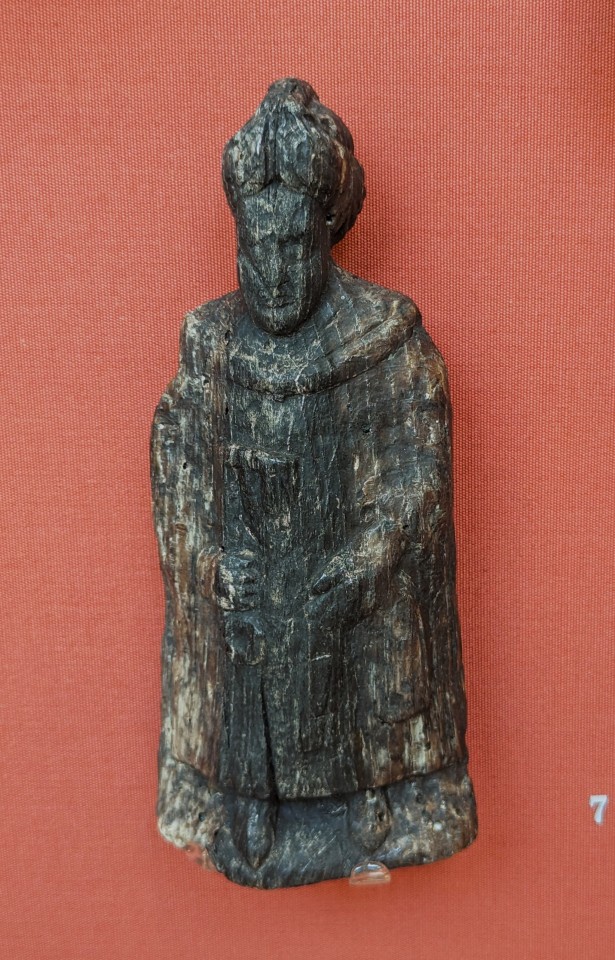
Oak Statuette of the Goddess Epona from Winchester, England dated to the 1st Century CE on display at the Winchester City Museum in Winchester, England
This small statue is thought to be the Gallo-Roman goddess Epona who was a protector of horses and goddess of fertility. While Epona's origins are from Celtic peoples the goddess proved to be very popular amongst the cavalry regiments in the Roman army. She was the sole Celtic diety worshipped in the city of Rome due to this.
Photographs taken by myself 2023
#art#archaeology#history#celts#celtic#england#english#ancient#roman empire#winchester city museum#winchester#barbucomedie
245 notes
·
View notes
Text

Ancient Celtic Helmet Is the Oldest Ever Found in Poland
Unearthed at the Łysa Góra archaeological site, the artifact, some 2,300 years old, is a prime example of Celtic metalworking
Archaeologists in Poland have unearthed a horde of 300 artifacts dating back to the fourth century B.C.E. Found at the Łysa Góra site in the region of Mazovia, near Warsaw, the trove includes iron axes, scissors and, most notably, a rare Celtic helmet.
A team from Warsaw’s State Archaeological Museum and University of Warsaw’s Department of Archaeology has been excavating in Łysa Góra since the spring. According to a statement by the team, the helmet was buried in a charcoal pit, along with four iron axes.
Though it was damaged by age, researchers determined the “spectacular” helmet was originally shaped like a cone, possessing a separate curved neck piece and decorated with etched lines. Its discovery has changed the team’s perceptions of the Celts—a group of Central European tribes who thrived during the Iron Age, from 1200 B.C.E. until 50 C.E.

The helmet is the first artifact of its kind to be found in Poland, as excavation leader Bartłomiej Kaczyński, of the archaeological museum, tells Science in Poland’s Ewelina Krajczyńska-Wujec. Before, only one other, much newer Celtic helmet had been discovered: a first-century piece found in the southern village of Siemiechów. The Łysa Góra helmet is at least 2,300 years old.
“At first we thought it might be some kind of ancient vessel, because bronze vessels are much more common on Polish soil than helmets,” Kaczyński tells Science in Poland, per Newsweek’s Aristos Georgiou. Then, the artifact’s neck piece—an arched plate near its edge—prompted archaeologist Andrzej Maciałowicz to suggest it could be a helmet.
Based on the artifact’s shape, and the fact that its tip was held together by a double knob, researchers concluded the piece is an early La Tène helmet. The Celtic culture of La Tène—French for “the shallows”—is named for Lake Neuchâtel in Switzerland, where researchers first found La Tène objects in the late-1800s, per ARTnews’ George Nelson. The culture formed around the fifth century B.C.E., about when Celts came into contact with Etruscan and Greek people from south of the Swiss Alps.
The La Tène style of metalworking developed between the fourth and third centuries B.C.E., and examples of it are “very rare,” per Science in Poland. While 1970s and ‘80s excavations at Łysa Góra revealed some small La Tène artifacts, researchers assumed they ended up in Poland via trading.
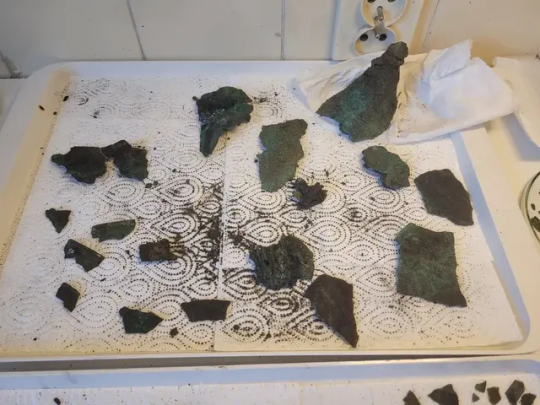


The recently discovered helmet, on the other hand, is an example of “the most advanced Celtic metallurgy,” Kaczyński says, and the piece was seemingly owned by a Celt, per Newsweek. The La Tène helmet’s presence in northern Poland changes researchers’ perceptions of the reach of the Celtic world in the pre-Roman period.
The other artifacts the research team found illustrate the ancient Celts’ proclivity for animal husbandry and farming: Blades from shears might have been used to cut sheeps’ wool, and scythes might have cut grain or grass. According to a statement by the archaeological museum, the researchers also found a collection of glass, amber and stone artifacts, including jewelry—bracelets, ornate necklaces and rings.
The helmet was taken to the State Archaeological Museum’s conservation department, where an expert in iron and bronze artifacts will spend several months conserving its pieces. As Kaczyński tells Science in Poland, the research team began excavating Łysa Góra to help construct an educational trail through the site. But the team’s “multitude of discoveries” indicates they may have more archaeological work to do than they thought.
By Sonja Anderson.

#Ancient Celtic Helmet Is the Oldest Ever Found in Poland#Łysa Góra archaeological site#war helmet#La Tène helmet#ancient artifacts#archeology#archeolgst#history#history news#ancient history#ancient culture#ancient civilizations#iron age#celtic history
44 notes
·
View notes
Text
This is going so much better than I thought!

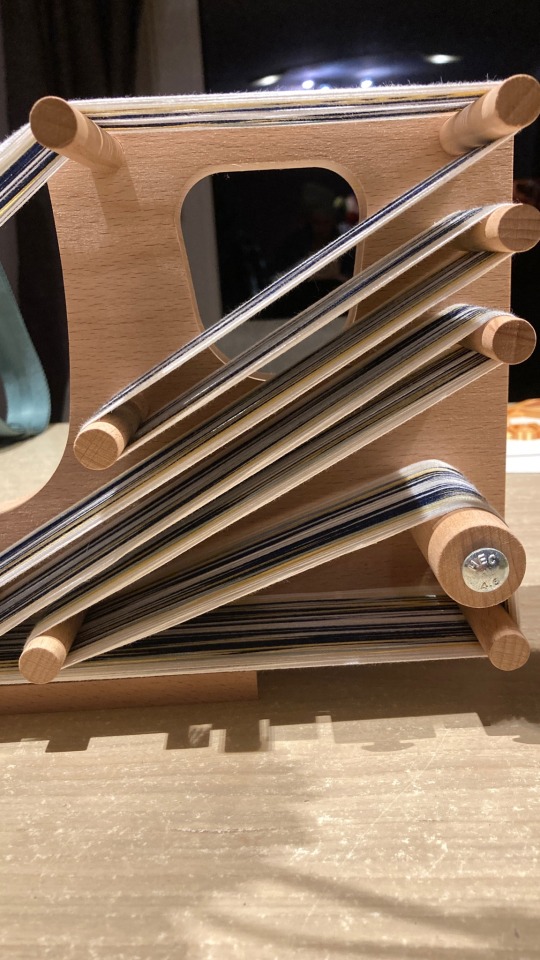

#tablet weaving#fabric weaving#vikings#archaeology#history#field archaeologist#reenactment#traditional handicraft#Celtic#halstatt#inkle loom#inklette loom#card weaving
188 notes
·
View notes
Text

Female Europid Mummy from the Necropolis of Subexi III, Grave M6, Turfan District, Xinjiang. 5th-3rd C. BCE. Source: Baumer, Christoph.The history of Central Asia. Vol.1. The age of the steppe warriors. London : I.B. Tauris, 2012. pg. 218 left DS329.4 .B38 2012. Image via University of Pennsylvania. See maps in the post before this one for a better understanding of the geography discussed.
"Section 26 – The Kingdom of Nearer [i.e. Southern] Jushi 車師前 (Turfan)
1. ‘Nearer Jushi’ 車師前 refers to the kingdom or state centered in the Turfan oasis or, sometimes, to the tribe which controlled it. There can be no question that Nearer Jushi refers here to the Turfan Oasis. See for example: CICA, p. 183, n. 618; also note 1.5 above. For the etymology of the name Turfan see Bailey (1985), pp. 99-100, which is summed up in his sentence: “The name turpana- is then from *druva-pāna- ‘having safe protection’, a name suitable for a walled place.”
“One other oasis town is currently under excavation. At Yarghul (Jiaohe), 10 km (16 miles) [sic – this should read 10 miles (16 km)] west of Turpan, archaeologists have been excavating remains of the old Jushi capital, a long (1,700 m (5,580 ft)) but narrow (200 m (656 ft)) town between two rivers. From the Han period they uncovered vast collective shaft tombs (one was nearly 10 m (33 ft) deep). The bodies had apparently already been removed from these tombs but accompanying them were other pits containing form one to four horse sacrifices, with tens of horses for each of the larger burials.” Mallory and Mair (2000), pp. 165 and 167.
“Some 300 km (186 miles) to the west of Qumul [Hami] lie [mummy] sites in the vicinity of the Turpan oasis that have been assigned to the Ayding Lake (Aidinghu) culture. The lake itself occupies the lowest point in the Turpan region (at 156 m (512 ft) below sea level it is the lowest spot on earth after the Dead Sea). According to accounts of the historical period, this was later the territory of the Gushi, a people who ‘lived in tents, followed the grasses and waters, and had considerable knowledge of agriculture. They owned cattle, horses, camels, sheep and goats. They were proficient with bows and arrows.’ They were also noted for harassing travellers moving northwards along the Silk Road from Krorän, and the territories of the Gushi and the kingdom of Krorän were linked in the account of Zhang Qian, presumably because both were under the control of the Xiongnu. In the years around 60 BC, Gushi fell to the Chinese and was subsequently known as Jushi (a different transcription of the same name).” Mallory and Mair (2000), pp. 143-144.
“History records that in 108 BC Turpan was inhabited by farmers and traders of Indo-European stock who spoke a language belonging to the Tokharian group, an extinct Indo-Persian language [actually more closely related to Celtic languages]. Whoever occupied the oasis commanded the northern trade route and the rich caravans that passed through annually. During the Han Dynasty (206 BC-AD 220) control over the route see-sawed between Xiongnu and Han. Until the fifth century, the capital of this kingdom was Jiaohe.” Bonavia (1988), p. 131.
“Turpan is principally an agricultural oasis, famed for its grape products – seedless white raisins (which are exported internationally) and wines (mostly sweet). It is some 80 metres (260 feet) below sea level, and nearby Aiding Lake, at 154 metres (505 feet) below sea level, is the lowest continental point in the world.” Ibid. p. 137.
“The toponym Turfan is also a variation of Tuharan. Along the routes of Eurasia there are many other place names recorded in various Chinese forms that are actually variations of Tuharan.” Liu (2001), p. 268."
-Notes to The Western Regions according to the Hou Hanshu. Second Edition (Extensively Revised and Expanded). John E. Hill. University of Washington.
#tocharian#celtic#indo european#tarim basin#xinjiang#chinese history#mummies#history#ancient history#archaeology#anthropology#silk road#pagan
462 notes
·
View notes
Text
the gortnacrannagh idol
unearthed in 2021 from a bog in county roscommon, ireland
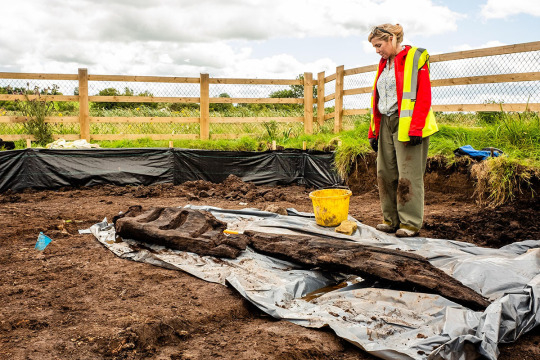


and a reconstruction
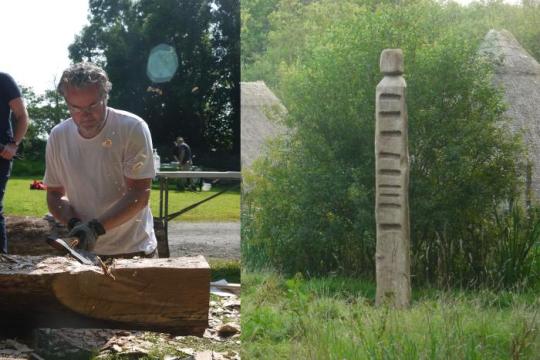
91 notes
·
View notes
Text

The Celtic goddess Sequana in her duck-boat.
Bronze, Gallo-Roman era, Archaeological Museum of Dijon
#cultus deorum#celtic#celtpol#gaulpol#gallo-roman#archaeology#roman archaeology#celtic art#sequana#polytheism#gaulish polytheism#gaul#oh she comin#the duck is holding a ball in its mouth#also the boat is LITERALLY a duck#it doesnt get better than this my friends
177 notes
·
View notes
Text

echoes of the past.
instagram
print shop
#photography#original photography#photographers on tumblr#nature#nature photography#gothic#dark nature#forestcore#goth aesthetic#pagan#paganism#pagan witch#celtic paganism#celtic mythology#celtic art#cernunnos#ancient history#celts#celtic#ancient celts#archaeology#history#scotland#fife#dunino den
24 notes
·
View notes
Text
Did the ancient Celts really paint themselves blue?
Part 1: Brittonic Body Paint




Clockwise from top left: participants in the Picts Vs Romans 5k, a 16th c. painting of painted and tattooed ancient Britons, Boudica: Queen of War (2023), Brave (2012).
The idea that the ancient and medieval Insular Celts painted themselves blue or tattooed themselves with woad is common in modern culture. But where did this idea come from, and is there any evidence for it? In this post, I will examine the evidence for the use of body paint among the ancient peoples of the British Isles, including both written sources and archaeology.
For this post, I am looking at sources pertaining to any ethnic group that lived in the British Isles from the late Iron Age through the early Roman Era. (Later Roman and Medieval sources will be discussed in part 2.) The relevant text sources for Brittonic body paint date from approximately 50 BCE to 100 CE. I am including all British Isles cultures, because a) determining exactly which Insular culture various writers mean by terms like ‘Briton’ is sometimes impossible and b) I don’t want to risk excluding any relevant evidence.
Written Sources:
The earliest source for our notion of blue Celts is Julius Cesar's Gallic War book 5, written circa 50 BCE. In it he says, "Omnes vero se Britanni vitro inficiunt, quod caeruleum efficit colorem, atque hoc horridiores sunt in pugna aspectu," which translates as something like, "All the Britons stain themselves with woad, which produces a bluish colouring, and makes their appearance in battle more terrible" (translation from MacQuarrie 1997). Hollywood sometimes interprets this passage as meaning that the Celts used war paint, but Cesar says that all Britons colored themselves, not just the warriors. The blue coloring just had the effect (on the Romans at least) of making the Briton warriors look scary. The verb inficiunt (infinitive inficio) is sometimes translated as 'paint', but it actually means dye or stain. The Latin verb for paint is pingo (MacQuarrie 1997).
The interpretation of vitro as woad is supported by Vitruvius' statements in De Architectura (7.14.2) that vitrum is called isatis by the Greeks and can be used as a substitute for indigo. Isatis is the Greek word for woad; this is where we get its modern scientific name Isatis tinctoria. Woad and indigo both contain the same blue dye pigment, hence woad can be used as a substitute for indigo (Carr 2005, Hoecherl 2016). The word vitro can also mean 'glass' in Latin, but as staining yourself with glass doesn't make much sense, it's more commonly interpreted here as woad (Carr 2005, Hoecherl 2016, MacQuarrie 1997). I will revisit this interpretation during my discussion of the archaeological evidence.
Almost a century later in De situ orbis, Pomponius Mela says that the Britons "whether for beauty or for some other reason — they have their bodies dyed blue," (translation by Frank E. Romer) using virtually identical language to Cesar, "vitro corpora infecti" (Lib. III Cap. VI p. 63). Pomponius Mela may have copied his information from Cesar (Hoecherl 2016).
Then in 79 CE, Pliny the Elder writes in Natural History book 22 ch 2, "There is a plant in Gaul, similar to the plantago in appearance, and known there by the name of "glastum:" with it both matrons and girls among the people of Britain are in the habit of staining the body all over, when taking part in the performance of certain sacred rites; rivalling hereby the swarthy hue of the Æthiopians, they go in a state of nature." In spite of the fact that glastum means woad in the Gaulish and Celtic languages, Pliny seems to think glastum is not woad. In Natural History book 20 ch 25, he describes different plant which is almost certainly woad, a “wild lettuce” called "isatis" which is "used by dyers of wool." (Woad is a well-known source of fabric dye (Speranza et al 2020)).
Of course, "rivaling the swarthy hue of the Æthiopians" doesn't necessarily mean blue. Pliny seems to think Ethiopians literally have coal-black skin (Latin ater). Additionally, Pliny is taking about a ritual done by women, where Cesar was talking about a practice done by everyone. Are they talking about 2 different cultural practices, or is one of them reporting misinformation? Or are both wrong? Unfortunately, there is no way to know.
The Roman poets Ovid, Propertius, and Marcus Valerius Martialis all make references to blue-colored Britons (Carr 2005), but these are literary allusions, not ethnographic reports. As such, they don't really provide additional evidence that the Britons were actually dyeing or painting themselves blue (Hoecherl 2016). These poetic references merely demonstrate that the Romans believed that the Britons were.
In the sources that come after Pliny the Elder, starting in the 3rd century, there is a shift in the terms used. Instead of inficio which means to dye or stain (Hoecherl 2016), probably a temporary application of color to the surface of the skin, later sources use words like cicatrices (scars) and stigma/stigmata (brand, scar, or tattoo) (Hoecherl 2016, MacQuarrie 1997, Carr 2005) which suggest a permanent placement of pigment under the skin, i.e. a tattoo. This evidence for tattooing will be discussed in a second post.
Discussion:
Although the Romans clearly believed that the Britons were coloring themselves with blue pigment, that doesn't necessarily mean that Julius Cesar, Pomponius Mela, or Pliny the Elder are reliable sources.
In the sentence before he claims that all Britons color themselves blue, Julius Cesar says that most inland Britons "do not sow corn [aka grain], but live on milk and flesh and clothe themselves in skins." (translation from MacQuarrie 1997). This is demonstrably false. Grains like wheat and barley and storage pits for grain have been found at multiple late Iron Age sites in inland Britain (van der Veen and Jones 2006, Lightfood and Stevens 2012, Lodwick et al 2021). This false characterization of Insular Celts as uncivilized savages would continue to show up more than a millennium later in English descriptions of the Irish.
Pomponius Mela, in addition to believing in blue-dyed Britons, also believed that there was an island off the coast of Scythia inhabited by a race called the Panotii "who for clothing have big ears broad enough to go around their whole body (they are otherwise naked)" (Chorographia Bk II 3.56 translation from Romer 1998). Pliny the Elder also believed in Panotii.

15th-century depiction of a Panotii from the Nuremberg Chronicle. Was Celtic body paint as real as these guys?
The Roman historians Tacitus and Cassius Dio make no mention of body paint in their coverage of Iron Age British history (Hoecherl 2016). Their silence on the subject suggests that, in spite of Cesar's claim that all Britons colored themselves blue, the custom of body staining or painting was not actually widespread.
Considering all of these issues, is any of this information trustworthy? Based on my experience studying 16th c. Irish dress, even bigoted sources based on second-hand information often have a grain of truth somewhere in them. Unfortunately, exactly which bit is true is hard to identify without other sources of evidence, and this far in the past we don't have much.
Archaeological Evidence:
There are no known artistic depictions of face paint or body art from Great Britain during this time period. There are some Iron Age continental European coins that show what may be face painting or tattoos, but no such images have been found on British coins (Carr 2005, Hoecherl 2016).
In order for the Britons to have dyed themselves blue, they needed to have had blue pigment. Woad is not native to Great Britain (Speranza et al 2020), but Woad seeds have been found in a pit at the late Iron Age site of Dragonby in England, so the Britons had access to woad as a potential pigment source in Julius Cesar's time (Van der Veen et al 1993). Egyptian blue is another possible source of blue pigment. A bead made of Egyptian blue was found at a late Bronze Age site in Runnymede, England. Pieces of Egyptian blue could have been powdered to produce a pigment for body paint. (Hoecherl 2016). Egyptian blue was also used by the Romans to make blue-colored glass (Fleming 1999). Perhaps this is what Cesar meant by 'vitro'.


Potential sources of blue: Isatis tinctoria (woad) leaves and a lump of Egyptian blue from New Kingdom Egypt
Modern experiments have found that reasonably effective body paint can be made by mixing indigo powder either with water, forming a runny paint which dries on the skin, or with beef drippings, forming a grease paint which needs soap to be removed (Carr 2005, reenactor description). The second recipe is very similar to one used by modern east African argo-pastoralists which consists of ground red ocher mixed with cow fat (unpublished interview*).
Finding blue pigment on the skin of a bog body might confirm Julius Cesar's claim, but unfortunately, the results here are far from conclusive. To my knowledge, Lindow II is the only British bog body that has been tested for indigotin, the dye pigment in woad and indigo. No indigotin was found (Taylor 1986).
The late Iron Age-early Roman era bog bodies Lindown II and Lindown III show some evidence of mineral-based body paint (Joy 2009, Giles 2020). Both of them have elevated levels of calcium, aluminum, silicon, iron, and copper in their skin. Lindow III also has elevated levels of titanium. The calcium levels may simply be the result the of the bog leeching calcium from their bones. Some researchers have suggested that the other elements may be from mineral-based paints applied to the skin. The aluminum and silicon may be from clay minerals. The iron and titanium could be from red ocher. The copper could be from malachite, azurite, or Egyptian blue (CuCaSiO4), pigments that would give a green or blue color (Pyatt et al 1995, Pyatt et al 1991). These elements may have other sources however, and are not present in large enough amounts to provide definitive proof of body paint (Cowell and Craddock 1995, Giles 2020). Testing done on the early Roman Era (80-220 CE) Worsley Man has found no evidence of mineral-based paint (Giles 2020).
One final type of artifact that provides some support for Julius Cesar's claim is a group of small cosmetic grinders from late Iron Age-Roman Era Britain. These mortar and pestle sets are found almost exclusively in Great Britain and are of a style which appears to be an indigenous British development. They are distinctly different from the stone palettes used by the Romans for grinding cosmetics which suggests that these British grinders were used for a different purpose than making Roman-style makeup (Carr 2005). Archaeologist Gillian Carr has suggested that these British grinders might have been used by the Britons for grinding, mixing, and applying a woad-based body paint (Carr 2005).



Left and center: Cosmetic grinder set from Kent. Right: Cosmetic mortar from Staffordshire. images from Portable Antiquities Scheme under CC attribution license
The mortars have a variety of styles of decoration, but the pestles (top left and top center) typically feature a pointed end which could be used for applying paint to the skin (Carr 2005). The grinders are quite small, (most are less than 11 cm (4.5 in) long), making them better suited to preparing paint for drawing small designs rather than for dyeing large areas of skin (Carr 2005, Hoecherl 2016).
Conclusions:
Admittedly, this post is a bit off-topic, since the Irish are not mentioned, but dress history is also about what people did not wear. Hollywood has a tendency to overgeneralize and expropriate, so I want to be clear: There is no known evidence that the ancient Irish used body paint.
So, who did? For the reasons I have already discussed, I don't consider any of the Roman writers particularly trustworthy, but I think the following conclusions are plausible:
A least a few people in Great Britain dyed/stained or painted their bodies between circa 50 BCE and perhaps 100 CE, after which mentions of it end. Written sources from c. 200 CE on talk about tattoos rather than painting or staining. The custom of body dyeing/painting may have started as something practiced by everyone and later changed to something practiced by just women.
None of the writers mention any designs being painted, but Julius Cesar's description could encompass designs or solid area of color. Pliny, on the other hand, states that women were coloring their entire bodies a solid color. The dye was probably blue, although Pliny implies it was black. (I know of no plants in northern Europe that resemble plantago and produce a black dye. I think Pliny was reporting misinformation.)
Archaeological evidence and experimental recreations support the possibility that woad was the source of the pigment, but they cannot confirm it. Data from bog bodies indicate that a mineral pigment like azurite or Egyptian blue is more likely, but these samples are too small to be conclusive.
The small cosmetic grinders are suitable for making designs which might match Cesar and Mela's descriptions, but not Pliny's description of all-over body dyeing.
*Interview with a Daasanach woman I participated in while doing field school in Kenya in 2015.
Leave me a tip?
Bibliography:
Carr, Gillian. (2005). Woad, Tattooing and Identity in Later Iron Age and Early Roman Britain. Oxford Journal of Archaeology 24(3), 273–292. https://doi.org/10.1111/j.1468-0092.2005.00236.x
Cowell, M., and Craddock, P. (1995). Addendum: Copper in the Skin of Lindow Man. In R. C. Turner and R. G. Scaife (eds) Bog Bodies: New Discoveries and New Perspectives (p. 74-75). British Museum Press.
Fleming, S. J. (1999). Roman Glass; reflections on cultural change. University of Pennsylvania Museum of Archaeology and Anthropology, Philadelphia. https://www.google.com/books/edition/Roman_Glass/ONUFZfcEkBgC?hl=en&gbpv=0
Giles, Melanie. (2020). Bog Bodies Face to face with the past. Manchester University Press, Manchester. https://library.oapen.org/viewer/web/viewer.html?file=/bitstream/handle/20.500.12657/46717/9781526150196_fullhl.pdf?sequence=1&isAllowed=y
Hoecherl, M. (2016). Controlling Colours: Function and Meaning of Colour in the British Iron Age. Archaeopress Publishing LTD, Oxford. https://www.google.com/books/edition/Controlling_Colours/WRteEAAAQBAJ?hl=en&gbpv=0
Joy, J. (2009). Lindow Man. British Museum Press, London. https://archive.org/details/lindowman0000joyj/mode/2up
Lightfoot, E., and Stevens, R. E. (2012). Stable Isotope Investigations of Charred Barley (Hordeum vulgare) and Wheat (Triticum spelta) Grains from Danebury Hillfort: Implications for Palaeodietary Reconstructions. Journal of Archaeological Science, 39(3), 656–662. doi:10.1016/j.jas.2011.10.026
Lodwick, L., Campbell, G., Crosby, V., Müldner, G. (2021). Isotopic Evidence for Changes in Cereal Production Strategies in Iron Age and Roman Britain. Environmental Archaeology, 26(1), 13-28. https://doi.org/10.1080/14614103.2020.1718852
MacQuarrie, Charles. (1997). Insular Celtic tattooing: History, myth and metaphor. Etudes Celtiques, 33, 159-189. https://doi.org/10.3406/ecelt.1997.2117
Pomponius Mela. (1998). De situ orbis libri III (F. Romer, Trans.). University of Michigan Press. (Original work published ca. 43 CE) https://topostext.org/work/145
Pyatt, F.B., Beaumont, E.H., Buckland, P.C., Lacy, D., Magilton, J.R., and Storey, D.M. (1995). Mobilization of Elements from the Bog Bodies Lindow II and III and Some Observations on Body Painting. In R. C. Turner and R. G. Scaife (eds) Bog Bodies: New Discoveries and New Perspectives (p. 62-73). British Museum Press.
Pyatt, F.B., Beaumont, E.H., Lacy, D., Magilton, J.R., and Buckland, P.C. (1991) Non isatis sed vitrum or, the colour of Lindow Man. Oxford Journal of Archaeology, 10(1), 61–73. https://www.researchgate.net/publication/227808912_Non_Isatis_sed_Vitrum_or_the_colour_of_Lindow_Man
Speranza, J., Miceli, N., Taviano, M.F., Ragusa, S., Kwiecień, I., Szopa, A., Ekiert, H. (2020). Isatis Tinctoria L. (Woad): A Review of Its Botany, Ethnobotanical Uses, Phytochemistry, Biological Activities, and Biotechnical Studies. Plants, 9(3): 298. https://doi.org/10.3390/plants9030298
Taylor, G. W. (1986). Tests for Dyes. In I. Stead, J. B. Bourke and D. Brothwell (eds) Lindow Man: the Body in the Bog (p. 41). British Museum Publications Ltd.
Van der Veen, M., and Jones, G. (2006). A Re-analysis of Agricultural Production and Consumption: Implications for Understanding the British Iron Age. Vegetation History and Archaeobotany, 15 (3), 217–228. doi:10.1007/s00334-006-0040-3 https://www.researchgate.net/publication/27247136
Van der Veen, M., Hall, A., and May, J. (1993). Woad and the Britons painted blue. Oxford Journal of Archaeology, 12(3), 367-371. https://www.researchgate.net/publication/249394983
#cw anti-black racism#romano-british#period typical bigotry#iron age#bog bodies#no photographs of bog bodies though#roman era#ancient celts#celtic#woad#insular celts#anecdotes and observations#body paint#brittonic#archaeology
31 notes
·
View notes
Text
reject coffee shop au embrace medieval au
#the real reason i did archaeology in uni was to write my blorbos as knights#granted i specialised in celtic irish archaeology and we didn't have knights until the arrival of the anglo normans but still#if i finish this fic I'll do one with my blorbos as monks in the same abbey#I'LL DO ONE WITH MY BLORBOS AS FIANNA IN A TÁIN BÓ LMAO
28 notes
·
View notes
Text
I had two days of from work and managed to visit my local Gallo-Roman museum (the name is actually deceiving as they focus on the area between Neanderthals and Merovingians). Here are some of the things I saw!



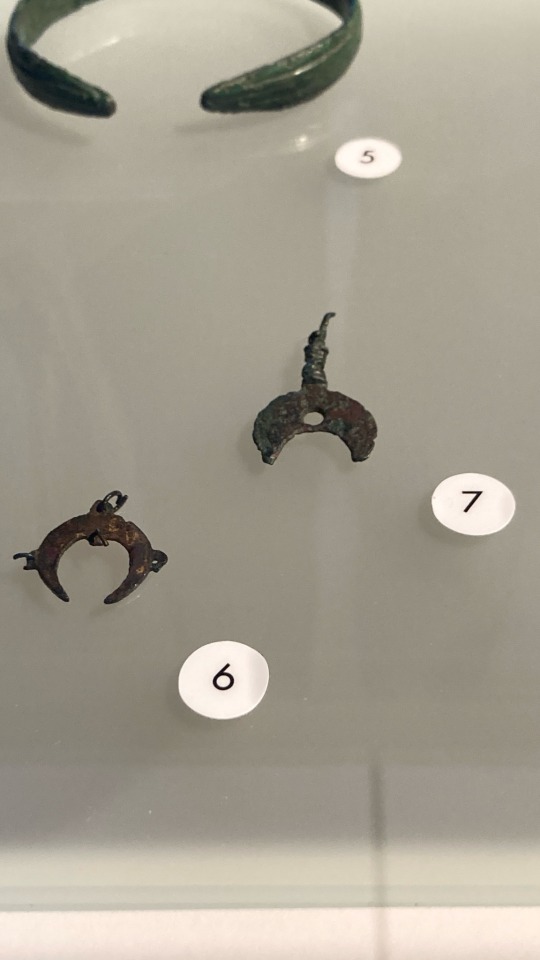


1) Gallic Torcs in gold
2) a complete Dodecahedron in bronze
3) Late Roman dress pins in bronze
4) Lunulae, moon shaped pendants, generally believed to be a lucky charm
5) a Merovingian bucket, a funerary gift
6) late Roman keys in iron
#frankish#merovingian#viking archaeology#archaeology#carolingian#charlemagne#field archaeology#viking mythology#merovingian archaeology#germanic mythology#roman archaeology#rome#ancient rome#western Roman Empire#ravenna#Gaul#gaulois#Celtic#Hallstatt#norse mythology#anglo saxon#viking#field archaeologist#frisian#odin#vikings#germanic#germanic folklore#germanic archaeology
20 notes
·
View notes
Text

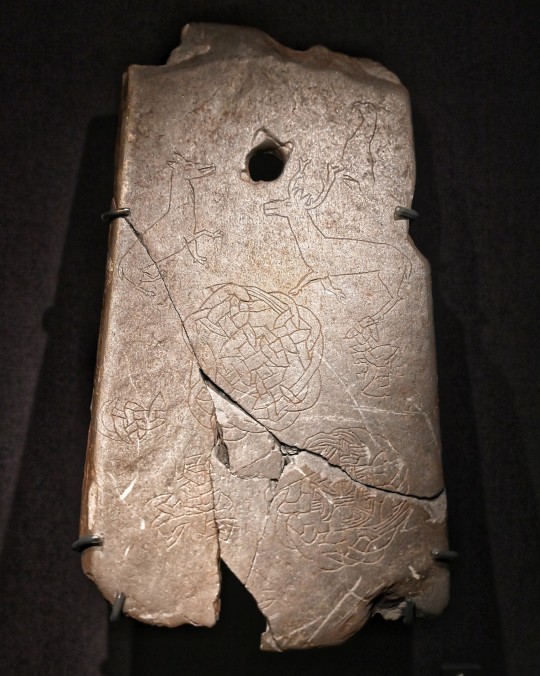


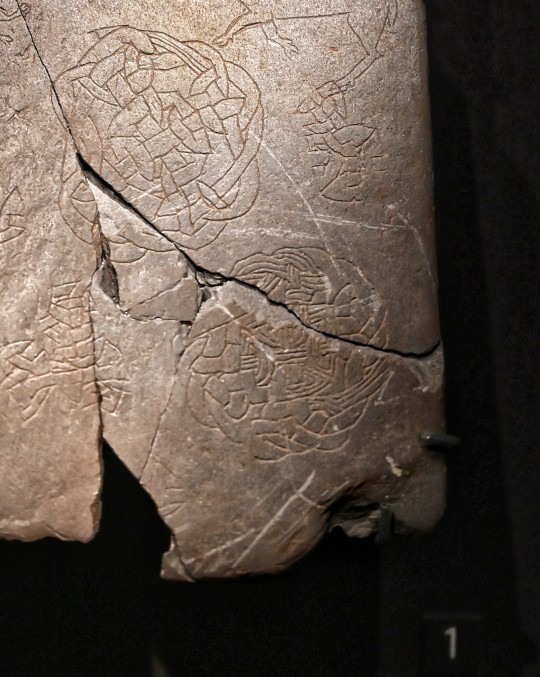
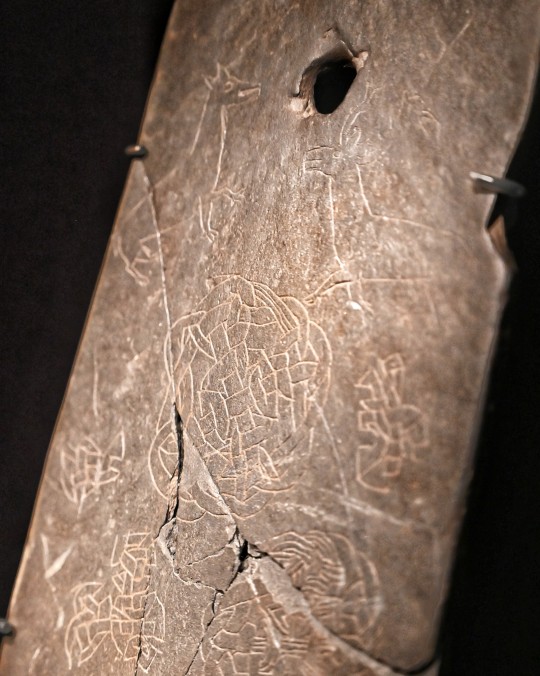
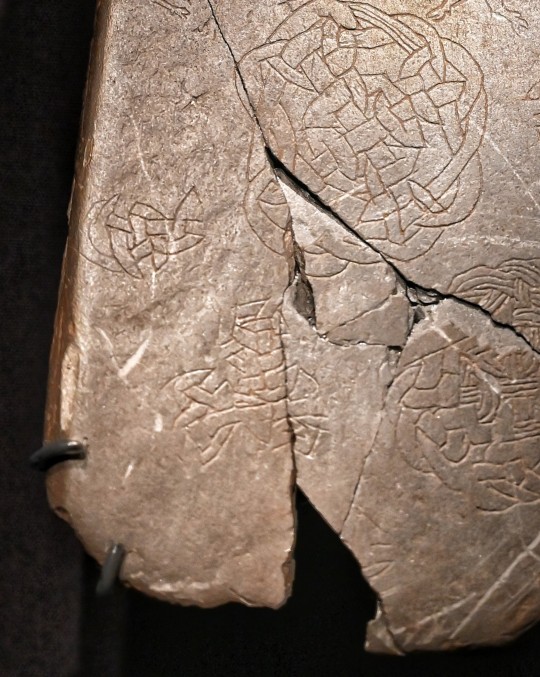
Ancient Inscribed Stone (Beasts and Knotwork), Kilmartin Museum, Kilmartin Glen, Argyll, Scotland
#ancient stones#knotwork#Celtic#celtic knot#archaeology#relic#ancient craft#ancient living#ancient cultures#ritual#early religion#beast#stag#symbols#argyll#Scotland
698 notes
·
View notes
Text


Tintignac Helmet from Naves, France dated to between the 3rd and 2nd Centuries BCE on display at the Bibracte Museum in Burgundy, France
Records from travellers and artistic renditions of Celtic warriors around the world often depict them wearing ornate and extragant helmets. They were often decorated with horns or animals like birds (as seen here). Such decorations were extremely unusual in reality but some examples have been found like this one here depicting a long knecked bird.
These helmets would have not been the most useful in terms of protection but armour has often been used more as displays of status rather than protection.
Photographs taken by myself 2023
#armour#fashion#art#ancient#celt#celtic#france#archaeology#french#military history#bibracte museum#burgundy#barbucomedie
32 notes
·
View notes